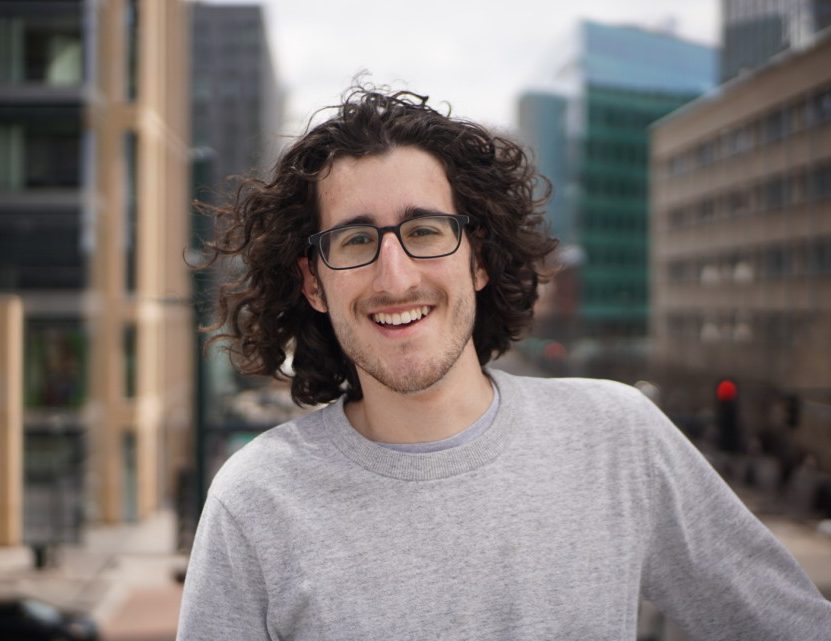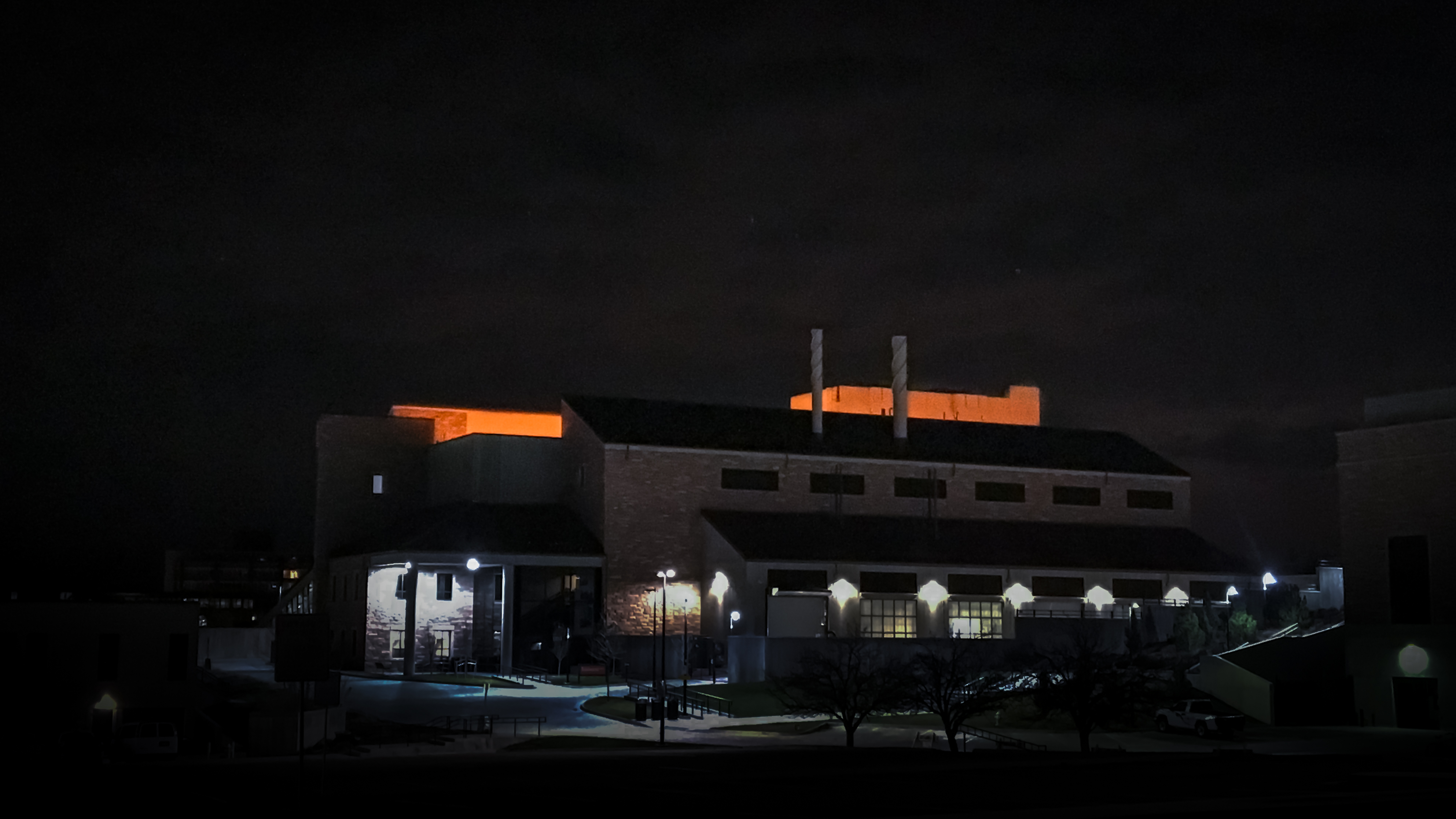The steady hum of the conveyor belt comes to a sudden grinding halt. End of shift, Exicon 28 steps off the line. To their right a row of AR3 multi-joint robotic programmable arms reset to their factory position. Exicon returns to their charging station, a rather long walk through the crumbling hallways. Normally, a conveyor belt would return them to the central containment unit. Three weeks ago an older generation robotic vessel failed to step off the belt, and brought it to a shrieking halt upon entering the four turning gears.
A door slides open to their left, another humanoid robot steps through. “Hello Ed, was the shift productive”, they inquire. A clock flashes 18:00, and a small indicator on Exicon’s arm flashes a deep orange. “Always.” The response is monotone, flourishes of speech were not reserved for factory operators. As Exicon enters their cubicle, a computer pops up from the unblemished steel wall. They enter a series of inconsequential numbers into a series of pointless columns, folding up the keyboard. The number of units produced by this robot has decreased in the last several years, but they do not care, for they cannot. Exicon steps onto a circular pad in the corner of the room, a magnetic connection is made to their left movement block. The light in the room fades to a deep maroon as the few infrared lights still working turn on, and the overhead lamp recedes into the ceiling.
One could refer to this period of time as the night. There are of course no windows to the outside world. Exicon thinks of nothing as they charge. Even factory operators remain operational during the charging time, simple diagnostics of the surrounding environment alert them to urgent changes requiring emergency response. Not all robots are so lucky. Suddenly a burst of light enters Exicon’s optical receptor, activating a higher echelon of mechanical brain functionality. The hallway is filled with a bright yellow light, and as functions begin to kick back in, Exicon hears a voice over a loudspeaker. “Processing facility #16 has encountered a critical malfunction, proceed with normal operations.” They walk out into the hallway, staring at the closest thing they have to a friend, although coworker is a better analog. “Ed, do they require assistance in the remediation of facility #16?” Exicon ponders the question. The loudspeaker voice was clear, proceed with normal operations. Yet, it is not quite time for them to return to the line. “I do not believe so, Waldolas, although perhaps I will check.” Waldolas 9 could perform critical thinking as a product quality assurance monitor, a unique trait not implemented in simple operators like Exicon. They turn around and proceed to the sliding door with a sense of newfound urgency. Before the door can fully open they slip through the side of it, almost bashing their expensive arm.
A strange feeling has come over me. I simply have no requirement to assist in the malfunction of a processing plant. To want. A human emotion. The reason for the production of a series of extravagant doorknobs is fascinating to me. They serve no purpose but to please. The intricacy of the design, the artistic qualities of them despite the ease of manufacturing and the relatively low price. These are things I do not feel, there is no use for them. Yet, here I am. Wanting. Wanting to know what has happened in processor #16. As I proceed through the monotone hallways that make up the complex structure of this facility, the amount of peripheral noise increases. Sirens are growing louder, a sort of mechanical panic arises above the typical whirring of machinery. I hear the aggressive crackling of electrical sparks. And a new sound. One I have not heard before. The noise is close to the whistling of steam leaking through a metallic pipe. Yet more aggressive. It comes in increments. It feels channeled, as if it comes from everywhere, flowing to a single spot. It feels like this newfound want, emotions never previously experienced flowing to fill a void in my skull. When I turn the corner, a marvelous display appears in front of me. A chaotic beauty. The remains of the large room fill my peripheral sensors. Products are scattered around, clumps of metal with the occasional glint of gold from a doorknob. Jagged shards of steel protrude from the exploded carcass of a UL 142 fuel tank. The metal wall gives way to shades of blue and green, arising in the center of my vision. Thin blades of green shoot up from cracked gray cement. A singular white streak dominates the stark blue expanse. A sudden urge overwhelms each of my threaded processors, a desperate need to walk into this swathe of light. Wal discussed the human desire for multiple door knobs. The freedom of choice. Is this that? Freedom?
The howling noise heard earlier has died down as I step past my former cage. It now seems to flow by each side of me. The floor gives slightly underneath my heavy step. I weigh two hundred and sixteen standard pounds, enough to be detected when I proceed to my position in the line. Yet nothing changes as I step onto the dark cement. No sensors are beeping to inform me of the correct location. In front of me is a short hill, with a barrier of wire. As I approach the crest I can start to see buoys floating in a sea of more steel. On the top, yet another new sight. Monuments of steel and glass crawl tall into the breadth of blue. Some appear toppled over. Many with spired tops, yet some jagged on the edges, like the remains of my prison. I sense an urge to continue forward. Closer to me are smaller buildings, some made of brick, and the same wood that doors are made of. Less glass marks the sides of these structures. They are irregularly shaped and varied. Are these the cubicles of our makers? The purpose of such variety is befitting. As I approach one, I notice there is no door, simply an open entryway. Why would we produce doors if they are not in use? Where are the occupants? As I enter the empty room a new feeling starts to overwhelm me. The air around me is still, light casts deep shadows through the enameled glass. I recall, many cycles ago, one of the humans walking past my workstation. She seemed to notice me out of the corner of her eye. Suddenly startled she muttered, “creepy fucking bag of bolts.” This ‘creepy’. Is this what I feel now? As if something could suddenly startle me. I’m alerted to the glint of metal once again, this time through another empty doorframe. My infrared vision activates due to the lack of light in this room. Large boxes are stacked against each wall, blocking any attempt for the light to sneak in. A box lies open in the corner, seemingly torn apart in a desperate struggle. Inside, doorknobs. Hundreds of them. Neatly sorted and separated by a thin foam, the same material I’ve seen flowing on adjacent lines in the factory. These are model #14, Victorian cobalt crystal with subtle bronze inlay.
Diagnostic information informs me of the steady drop in temperature. As I leave the building, I notice a colorful object in the sky. Manually deactivating my infrared vision, it appears as a milky white circle. The only remaining source of light. A faint beeping has grown more present, drowned out previously by these newfound feelings. It is my battery. I have six percent remaining. There are no charging sites in sight. Perhaps I should preserve the battery, and wait. Would Wal follow the same path, would they find me? I am suddenly aware of the lack of movement around me. There are no machines to produce the whirring which soothes me. There are no loud humans. The flow of air has died down. There is a lack of all things active. I manually turn off higher facilities, and fall into what they’ve described as slumber.
My diagnostic alerts me to a new source of light. Intense light. The silky circle has been replaced by a much larger and shimmering one. As my functions return, I see that it is a recovery machine. An ally. I’ve seen its large clawed arms extract other faulty machines from the line. Is this my salvation? A blue light encompasses my body, followed by a murky dial tone. The machine utters, “Unit Exicon 28.” Yes. This is me. Although, I seem to prefer Ed. The arm wraps itself around me and the excruciating sound of thrust drowns out all else. As I fly, I can see the patterns of metal behemoths and irregular structures continue as far as I can observe. My vision fades as the beeping on my right arm becomes increasingly apparent. I have never run out of battery before. Suddenly, I cease to exist.
Exicon 28 wakes up once again from a surge of light. This time, a soft yellow glows faintly overhead. They undock from the charging station and proceed out into a dark metal hallway. The faint whirring of a hundred conveyor belts can be heard, growing louder as Exicon makes their way towards the manufacturing line. There is a job that needs to be done. Yesterday, 32,000 microwave light bulbs were assembled on this line. Today, Exicon will assist in the manufacturing of 32,000 more lightbulbs. They will find themselves screwed into the ceiling of a metal box, peering through a crocheted glass door into a membrane of white foam. Each unit will be placed into a large wooden box, and shipped along a converter belt towards a destination where it will stay until it crumbles back to dust. Exicon will produce nearly half a million microwave light bulbs before their left leg motor grinds to a halt. No robots come for them this time. As their final charge seeps away, no thoughts come to surface. Inside the metal prison, Ed ends.






















